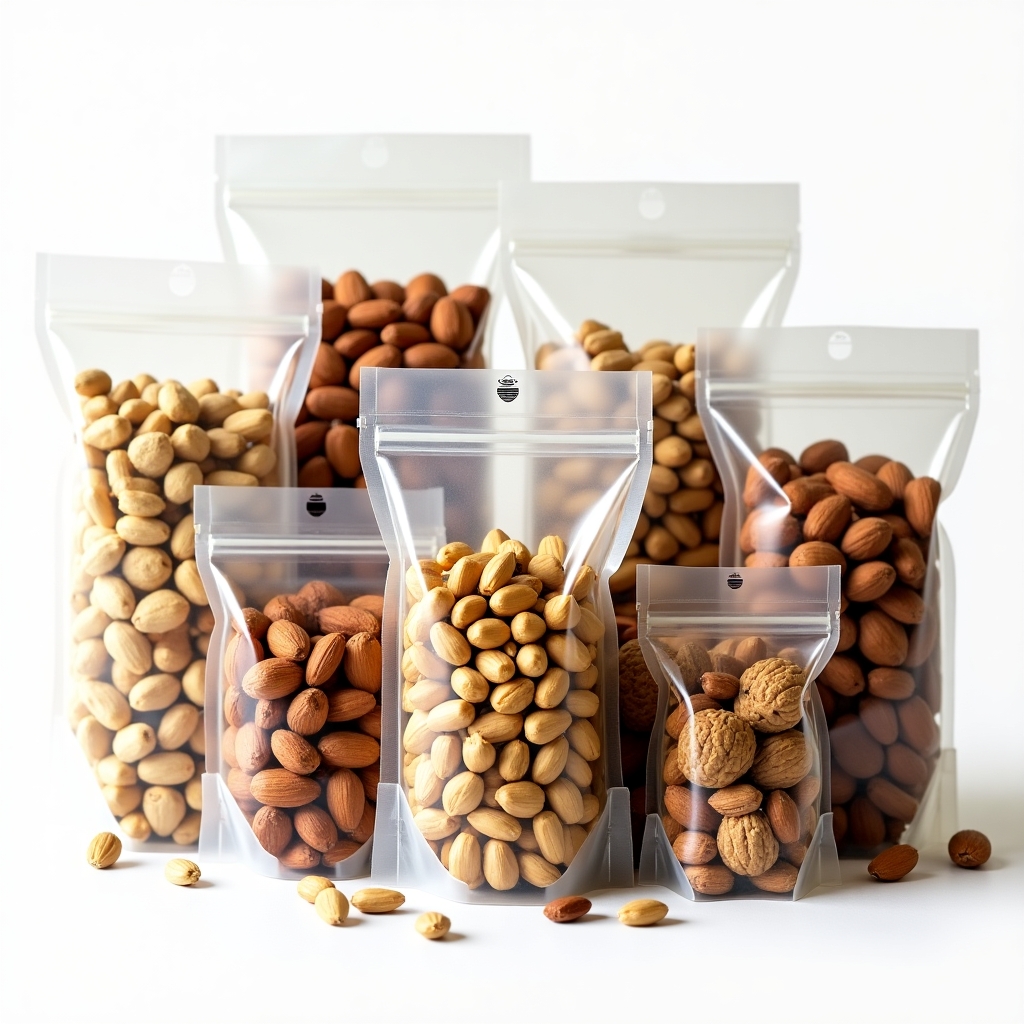Views: 0 Author: Site Editor Publish Time: 2025-10-17 Origin: Site












In the global food industry, preserving freshness directly impacts profitability, safety, and consumer trust. Plastic stands out among packaging materials for its flexibility, customizable barrier performance, and cost-effectiveness—key to combating food spoilage. This guide simplifies critical insights for food businesses, from small bakeries to large processors, on choosing and using quality food-grade plastic packages.
Economic Loss: The FAO estimates 1.3 billion tons of global food waste yearly, 30-40% from poor packaging. For example, a bakery using paper bags may waste 20% of bread; quality plastic cuts this to 5%.
Safety Risks: Spoiled food causes 600 million annual foodborne illnesses (WHO). Plastic acts as a barrier against pathogens like Salmonella and Listeria.
Consumer Demand: 75% of shoppers prioritize freshness (Nielsen), and 60% pay more for longer shelf lives. Poor packaging damages brand trust.
Custom Barriers: Plastic blocks oxygen, moisture, light, and aromas. EVOH-lined bags have an OTR of 0.1 cc/m²/day vs. paper’s 10,000+ cc/m²/day.
Durability & Flexibility: Shatterproof and conforms to products, reducing shipping damage and oxidation from empty space.
Cost-Effective: Lightweight (lowers shipping costs) and scalable for small businesses.
Microbial Growth: Bacteria (e.g., Pseudomonas), mold (Penicillium), and yeast thrive in oxygen-rich, moist conditions. They cause slime, mold, and off-flavors.
Oxidation: Oxygen breaks down fats (rancidity), fades colors (e.g., browned apples), and destroys 30-50% of vitamin C in produce within 24 hours.
Moisture Migration: Dry foods (cereals) absorb moisture (sogginess); high-moisture foods (meats) lose it (wilting, freezer burn).
Light Exposure: UV/visible light speeds up oxidation (oils turn rancid 50% faster) and destroys vitamins (milk loses 50% riboflavin in clear plastic under fluorescent light).
Waste & Emissions: Wasted food contributes 8% of global greenhouse gases (FAO).
Brand Damage: Social media amplifies issues—e.g., a moldy salad post can cut new customers by 15%.
Regulatory Penalties: EU fines for non-compliant packaging reach €100k; FDA penalties hit $1.2M per violation. Non-compliant products may be banned from markets (e.g., China’s GB 4806.7 standard).

Oxygen Barrier (OTR):
Low-barrier (LDPE, OTR 500-1000 cc/m²/day): Fresh produce (carrots).
Medium-barrier (HDPE/PP, OTR 100-500 cc/m²/day): Bread, cheese.
High-barrier (EVOH/PA/PET, OTR 0.1-10 cc/m²/day): Meats, seafood.
Laminates (e.g., EVOH/PE) combine strengths for vacuum-sealed bags.
Moisture Barrier (WVTR):
Low-barrier (cellulose, WVTR 50-100 g/m²/day): Rarely used.
Medium-barrier (LDPE/HDPE, WVTR 5-20 g/m²/day): Fresh fruits.
High-barrier (PET/Al-laminate, WVTR 0.1-5 g/m²/day): Cereals, powdered mixes.
Light Barrier: Opaque plastics (with TiO₂ or carbon black), UV stabilizers (for clear PET), or tinted films (green for spinach) block light.
Aroma Barrier: EVOH/PA trap food aromas (coffee retains scent 6 months vs. 1 month in PE); food-grade resins (virgin PE/PP) avoid plastic taste transfer.
Sealing Technologies:
Heat Sealing (120-200°C): Used for most bags (vacuum, MAP). Optimize temp/pressure for material (PE: 120-150°C; PET: 180-200°C).
Ultrasonic Sealing (20-40 kHz): Fast (0.1-0.5s/seal) for thin/EVOH films.
Integrity Testing:
Bubble Test: Submerge pressurized bags in water—bubbles = leaks.
Vacuum Decay Test: Precise for high-volume production.
Avoiding Issues: Cold seals (weak) use temp sensors; hot seals (holes) use adjustable controls; contaminated seals use 5-10mm “seal lands” (debris-free areas).
High-Temp Use:
Retort (121°C, 15 psi): PET/PA/PE laminates for soups, ready meals.
Pasteurization (60-85°C): LDPE/PP for milk, deli meats.
Microwave: PP/PET with vent holes (withstands 100-120°C).
Low-Temp Use:
Freezing (-18°C): Flexible LDPE/mPE (2-4 mils) prevent brittleness; laminates (PE/PA) avoid freezer burn.
Refrigeration (0-4°C): PET/PE laminates reduce condensation; microperforated PE releases excess moisture.
Thermal Stability: Test with cycles (40°C → -20°C for 7-14 days) to ensure no seal/barrier failure.
Food-Grade Criteria:
Virgin/purified resins (no contaminants).
Approved additives (e.g., FDA-approved TiO₂; no lead stabilizers).
Low migration (tested via simulants: water for juices, 3% acetic acid for tomatoes).
Avoid Harmful Substances:
Phthalates: Use phthalate-free plasticizers (citrates) or mPE instead of PVC.
BPA: Replace PC with PP/PET or BPA-free PC.
Heavy Metals: Use calcium-zinc stabilizers for PVC.
How It Works: Removes 95-99% air (O₂ <1%), hermetically seals. Inhibits aerobic bacteria and oxidation.
Applications: Meats (10-14 days fridge life vs. 3-5 days), seafood (2-3x shelf life), cheeses, prepared meals.
Key Considerations: 2-4 mil thickness (prevents punctures from bones); high-barrier EVOH/PA; strong seals.
Gas Blends (By Food Type):
Produce (lettuce): 2-5% O₂, 3-5% CO₂, 90-95% N₂ (prevents wilting/mold).
Bakery (bread): 0-2% O₂, 50-70% CO₂ (slows staleness/mold).
Deli Meats: 5-10% O₂, 20-30% CO₂ (maintains pink color).
Snacks (chips): 100% N₂ (prevents rancidity).
Benefits: Preserves texture (crisp produce), color (pink ham), and 80% of spinach’s vitamin C (vs. 40% in regular bags).
Quality Control: Precise gas blends (1% O₂ deviation cuts shelf life 20-30%); hermetic seals; OTR <5 cc/m²/day for bread.
Materials: PE (cookies), PET (cereals), PET/Al-laminate (instant coffee).
Features: Ziplocks (re-sealable), tear notches (easy opening), opaque films (light-sensitive powders) or clear windows (cookies).
Materials: PET/PA/PE (standard) or PET/Al/PE (long shelf life). Withstands 121-135°C.
Applications: Soups, ready meals, tuna (no metallic taste like cans).
Benefits: 80-90% lighter than cans (lowers shipping costs by 15-20%); saves 50% storage space; 70% prefer taste over cans (Nielsen).
Materials: LDPE (lightweight, 1-2 mils) or mPE (heavy-duty, 2-4 mils); PE/PA laminates (long-term storage).
Features: Thick gauge (puncture resistance), double seals (airtight), microwave-safe options with vents.
content is empty!